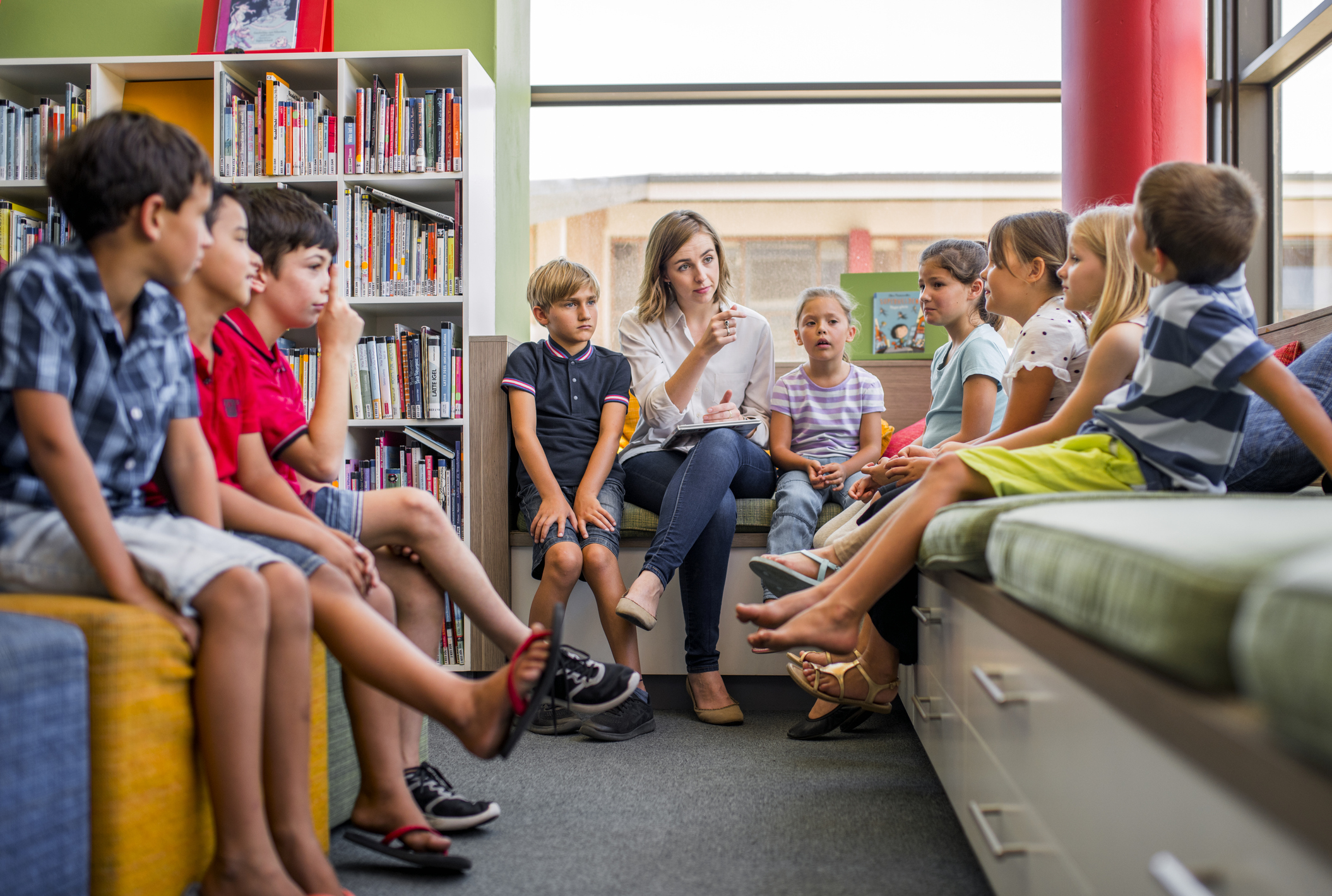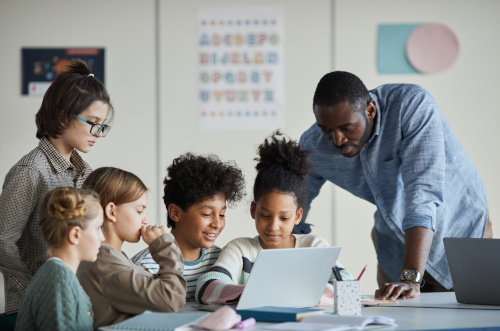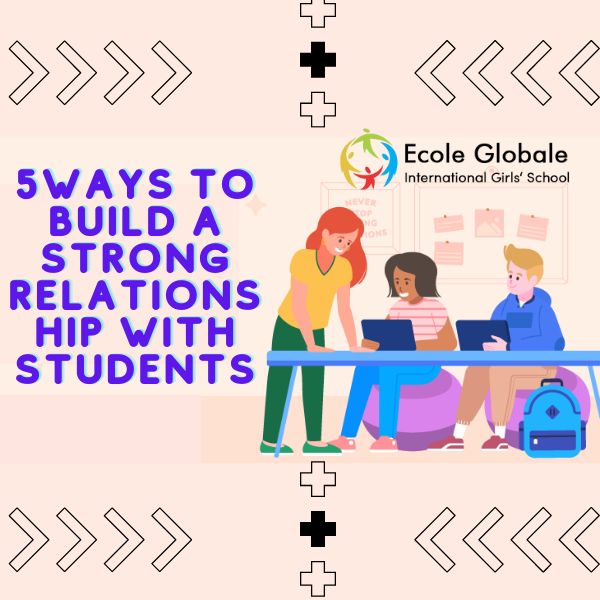As per research conducted by Boarding Schools in India, there are numerous benefits to building strong relationships with students. Besides making the class more enjoyable and establishing a better learning environment, strong relationships can affect student performance as well. We’ve established that it’s important to build these relationships with students, but how? This guide will provide you with some ideas and strategies on how to go about doing this.
Getting to Know Your Students

Teaching is one of the most rewarding professions, but it can also be one of the most challenging. One of the biggest challenges is getting to know your students.
It’s important to know who they are and what they need. You want to make sure you’re meeting their needs and helping them achieve success in your classroom. If you don’t know your students well enough, you’ll be working from a disadvantage when it comes time to plan lessons and create assignments.
There are several different strategies for getting to know your students better.
Icebreakers
An icebreaker is a fun activity that helps class members get acquainted with one another and gets them talking about themselves in an informal setting. There are many different types of icebreakers — some require more planning than others — but all allow you to learn more about your student’s interests, personalities, and backgrounds so that you can better relate to them in class.
Student Interest Surveys
A student interest survey allows you to get information about individual students’ interests and preferences so that you can make strong relationship or tailor assignments or activities accordingly (e.g., if a student loves music, perhaps he or she would enjoy listening to music while reading a particular chapter). You could also use interest surveys
Communication
A. Importance of effective communication
According to professionals from Boarding schools in India, communication is a vital skill for any manager. It’s important to be able to communicate clearly, concisely, and effectively with employees, customers, and other stakeholders. Communication is also an essential part of team building.
Effective communication requires you to listen carefully to what people are saying and then respond appropriately. You should also be aware of nonverbal cues such as body language and facial expressions that may give you clues about how your message is being received.
Communication involves both sending and receiving messages. This means that you must be able to understand the other person’s perspective as well as express your own ideas clearly and accurately.
Communication problems are often caused by a lack of clear understanding or poor listening skills on the part of one or both parties involved in the conversation. If you’re not paying attention or if you’re distracted by something else (such as another phone call or email), it’s easy for important details to be missed or misunderstood.
The best way to avoid these kinds of problems is for everyone involved in a conversation to be completely open-minded about what they will hear from each other — even if they don’t agree with it initially. This means listening carefully without judging too quickly so that you can fully understand what someone else has said before responding with
B. Strategies for effective communication
In this section, we will learn how to communicate effectively. Effective communication is a skill that we must master in order to be successful in all aspects of our lives.
Communication is one of the most important skills we have as humans, and it can make or break any relationship. Communication is the process through which information is exchanged between individuals and groups. It includes verbal behavior, nonverbal behavior, and written language (American Psychological Association, 2015).
The following are some strategies for effective communication:
1. Active listening
This means that you pay attention to what the other person is saying by making eye contact, nodding your head, and asking questions if necessary. You also avoid interrupting or giving advice unless asked directly by the speaker. When they finish speaking, summarize what they said so they know you were listening. This shows respect for their message and helps them feel heard and understood.
2. Clear and concise language
Use short sentences when communicating with others; don’t speak in riddles or use complicated words that may not be understood by everyone present at the time of communication (American Psychological Association). If someone asks you a question and you don’t understand what they’re asking, ask them to rephrase it so that there’s no ambiguity about what needs to happen next
A. Importance of a positive classroom environment
A positive classroom environment is important for the growth of students and teachers alike. A positive classroom environment can help students feel more comfortable and confident in their schoolwork, which in turn will help them learn more effectively.
A positive classroom environment helps teachers to teach more effectively as well. When students feel comfortable, they are more likely to ask questions and participate in class discussions. This creates a better learning environment for everyone, including the teacher!
B. Strategies for creating a positive classroom environment
A positive classroom environment is one where students are engaged, feel safe, and have a sense of belonging. It’s important to establish a classroom environment that promotes learning and supports your students’ success.
Classroom Environment Strategies
Here are some ideas for creating a positive classroom environment:
• Be welcoming and friendly to all students.
• Use humor and playfulness in your teaching.
• Create an inviting space for students with comfortable seating, good lighting, and decorations that reflect the theme of your class.
• Encourage active learning by providing opportunities for movement during class (e.g., walking around the room while working on assignments).
• Set clear expectations for behavior, academic work, and participation in class discussions.
Building Trust
A. Importance of trust in student-teacher relationships
Trust is the foundation of any relationship. In a student-teacher relationship, trust is the basis for mutual respect, admiration, and cooperation. It’s hard to imagine an effective learning environment without it.
Trust can be built in many ways, but what matters most is that it’s earned through actions and not words. Here are some examples:
When you give feedback in a respectful way.
When you are consistent in your expectations for behavior and performance (for example, when enforcing consequences for misbehavior).
When you give your attention to each student as an individual — not just as part of a group or class — so that they feel seen and heard by you.
B. Strategies for building trust 1
Building trust and strong relationship is a process. It takes time, and it takes effort. It’s not something that can happen overnight or even over a weekend. This means that you have to be willing to put in the work, but it also means that your partner has to do the same thing.
The following strategies can help you build trust with your partner:
1. Take responsibility for your own feelings and behavior
2. Apologize when you make a mistake or hurt someone
3. Practice effective communication skills
4. Be honest about what you want and need from the relationship
Addressing Student Needs

A. Importance of addressing student needs
Students come to school with varying backgrounds and needs, some of which can be identified and addressed through individualized instruction, support services, and resources.
B. Strategies for addressing student needs
1. Individualized instruction
Individualized instruction is the process of providing students with instructional content and activities that are tailored to their unique needs, interests, learning styles, and cultural backgrounds. The goal is to ensure that each student has access to quality education regardless of his or her background or ability level.
2. Support services and resources
Support services are differentiated instruction strategies that help students who need additional academic or social skills development to succeed in school. These services include tutoring programs, special education services, bilingual programs, counseling programs, and more.3
3. Regular check-ins and progress monitoring
Check-ins are designed to ensure that students are making progress towards a goal or objective set by the teacher/parent/administrator/student himself/herself/themselves (depending on what type of goal it is). Progress monitoring is a form of check-in where teachers monitor their students’ daily behavior or work habits in order to identify any problems early on so they can address them immediately rather than making strong relationship with students.
Conclusion
Get to know your students by making strong relationship. Find out what they like, and show them in return that you’re a good listener. If a student shares his or her thoughts with you, it can be a great indicator that the two of you are communicating effectively. Don’t feel discouraged if a student doesn’t say much at first; as you get to know each other better and as your relationship grows closer, you’ll both feel more and more comfortable sharing more—including what’s on your mind. That’s the goal: invigorating and enriching communication between you and your students so that they feel they can turn to you when they need help or guidance, or just want a friendly chat during those tough times we’ve all been there.








